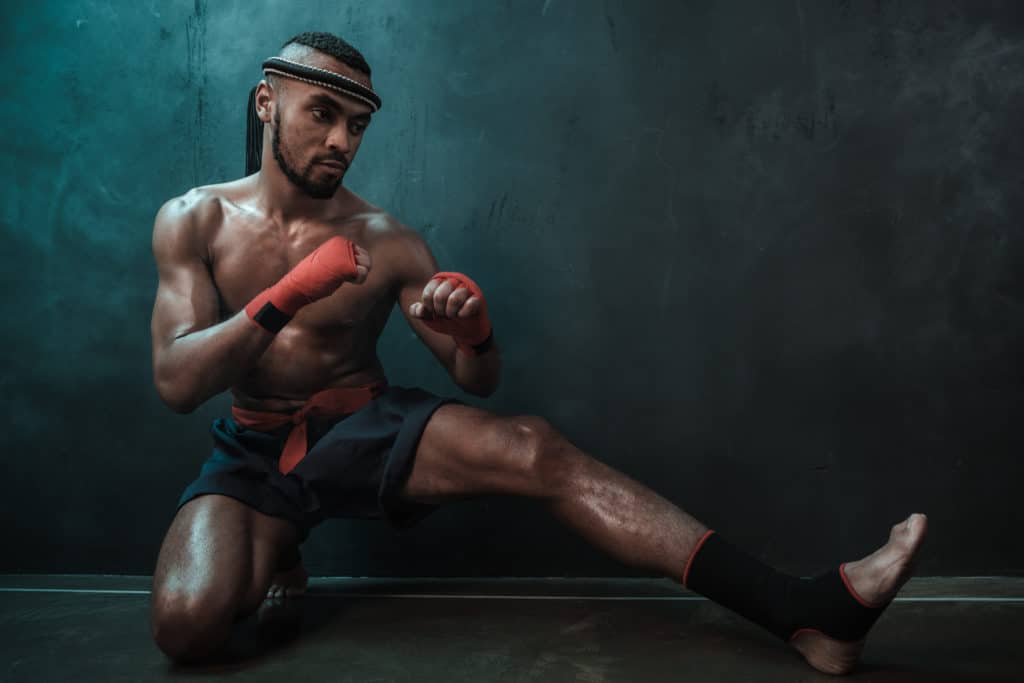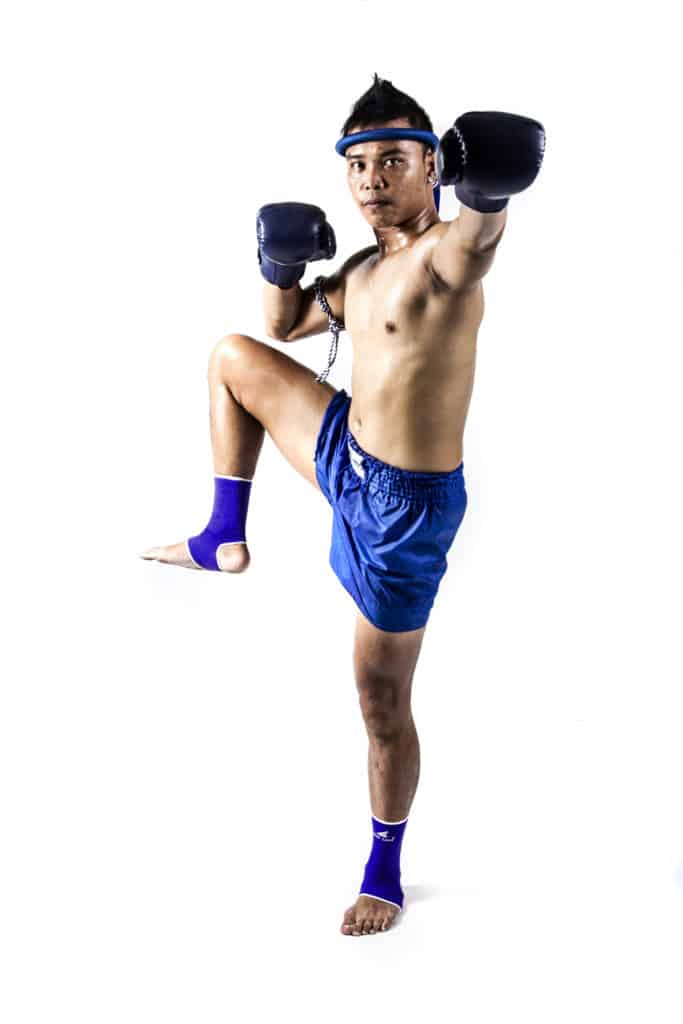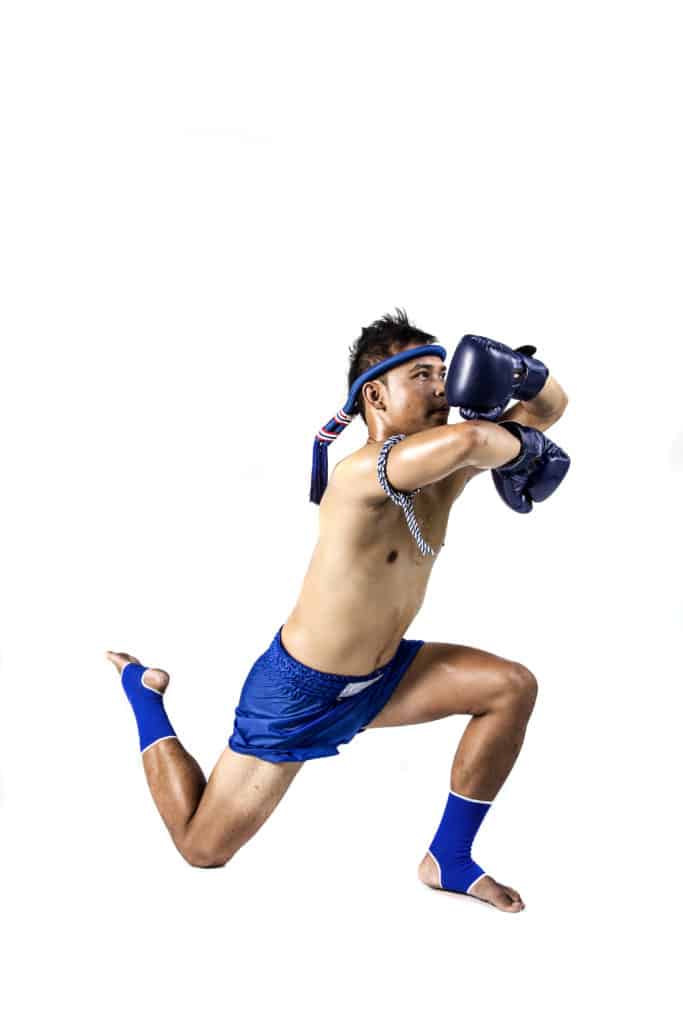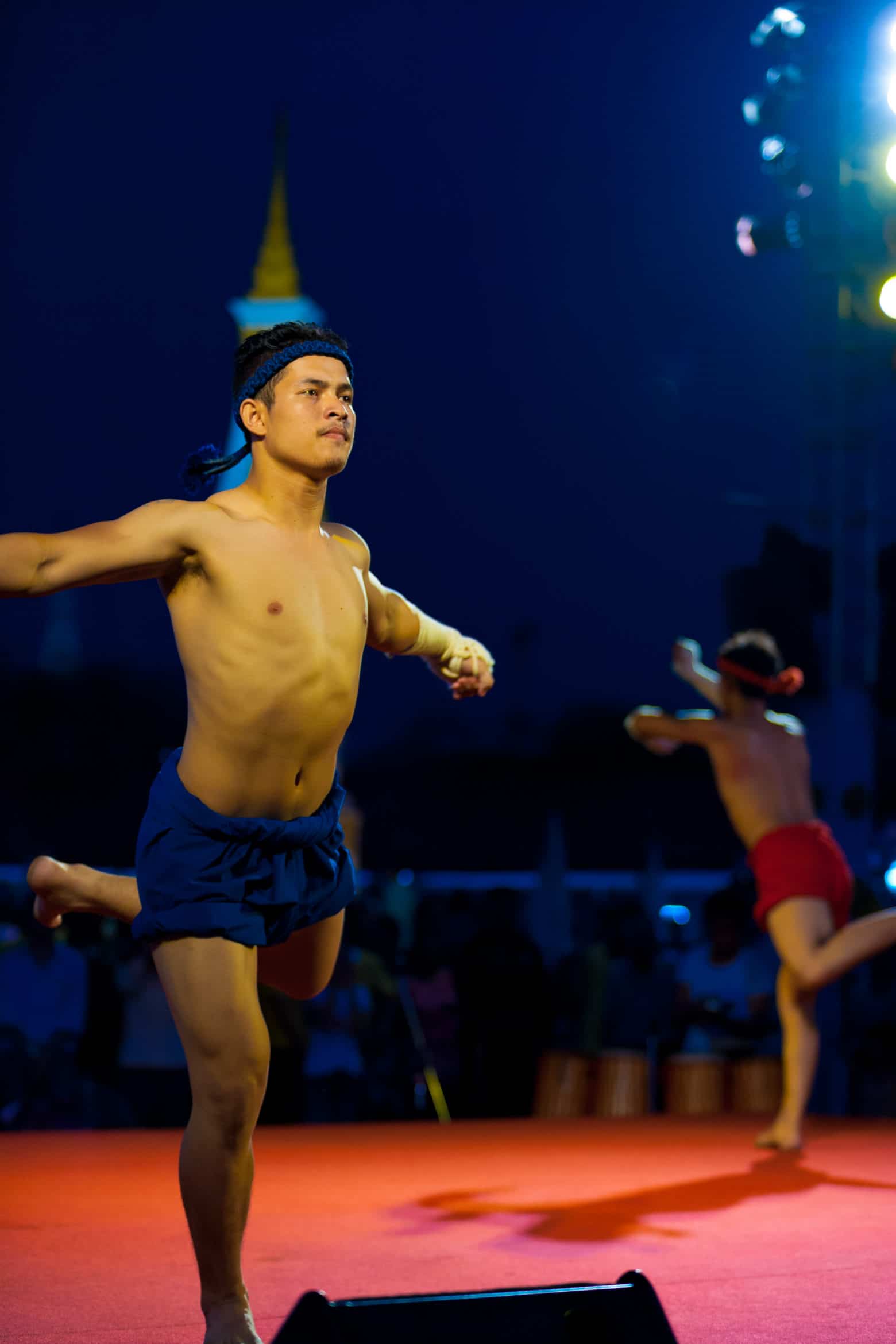What is the muay thai dance done before each Thai boxing match? Why is it performed and what does it signify?
The cultural and traditional aspects of muay thai makes this martial uniquely distinct from all other martial arts in the world today.
For the Thai people tradition, honor, respect and religion and spiritual belief are highly regarded and this is shown through the muay thai dance performed before each fight.
To understand the dance of thai boxing a little bit of Thai language, culture and history needs to be explained to get a full appreciation of this unique aspect of fighting in Thailand.
In Thai, the pre-fight muay thai dance is known as Wai Khru Ram Muay or commonly just referred to as Wai Khru and mostly consists of 3 sequences.
Wai Khru
Wai khru is a cultural and traditional ritual or ceremony from Thailand where students pay respects to their teachers to express their gratitude, show respect and pay homage.
The ceremony also symbolizes the formation of the student–teacher relationship.
This is not restricted to muay thai or martial arts but also for school students and teachers with wai khru taking place near the beginning of the school year across Thailand.
Also wai khru is practiced and shown traditionally in the traditional Thai performing arts, Thai massage, astrology and other arts such as traditional dancing.
Wai is the physical gesture of respect, apology and homage in which the person presses both hands together i.e “prayer hands” and raises them to the face while bowing the head down.
Generally the lower the bow of the head and the higher the hands are raised indicates a higher level of respect.

Krhu is the traditional Thai word for teacher which has its roots in the Sanskrit word guru.
So wai khru literally translates as paying respect to your teacher.
Ram Muay
Translated to English muay is boxing as in Muay Thai or Thai boxing. Ram means Traditional Thai style ‘dancing’ .
So ram muay literally means boxing dance.
This is the ritualistic dance performed before each muay thai fight by both fighters.
It is usually refereed to as simply wai khru to encompass the entire practice of ritualistic paying respect to the teacher or school of the thai boxing fighter and the dancing movements done before a fight.
3 Sequences of the Wai Khru
The wai krhu is usually divided into 3 parts.
The first part is the ‘Royal Homage’.
This sequence was originally meant to show devotion to the King and has its origins in muay boran where the best boxers competed to display their skills and become Royal Kings Guards.
The fighter will also move around the four corners of the ring with his right hand touching the ropes and stopping to pray at each corner to ‘seal’ the ring so that no negative vibes or bad luck can enter before the fight.
The fighter will move toward the center of the ring and kneel on both knees and touch his head to the ground three times in a bowing action.

The second part of the muay thai dance is the Kneeling section.
This is performed with one knee on the ground and the other leg stretched out in front. The fighter will face four directions of the ring pivoting on his knee.

The third and final sequence is performed standing.
Here the fighter will start from the center of the ring and ‘dance’ outward.
There are many, many different stylistic forms of the dance. Fighters will pay homage to deities such as Hanuman, the royal Eagle, Swans and the motion of “Rama Shooting an Arrow” from the Ramakien.

Practical applications of the Muay Thai Dance
Apart from being spiritualistic and paying homage in the traditional Thai sense, the wai khru also serves to allow the fighter to collect their thoughts and calm their minds before the fight begins.
The kneeling section also resembles modern hip opening stretches.
The physical and mental aspects of the wai khru serve the dual purpose of getting the fighter ready both physically and mentally as well as calming the spirit before the fight begins.

One section of the standing wai khru that is common among virtually all wai khru is the Yang Sam Khum or 3 stride movement.
It has very practical applications as it is basically the footwork of muay thai and includes the raising of leg which is the movement used to block kicks with your shin.
It has its roots in the basic footwork to move with balance in fighting.
Every Wai Khru is different and passed on from teacher to student.
Within each style are subtle movements and small hints which point to the fighters style and who is their teacher and which camp or school they come from.
There are many different Wai Khru styles, and many Thai fighters gain positive recognition from promoters for originality, confidence and “playing the crowd.”
Is the Wai Khru or Muay Thai Dance Absolutely Necessary to Perform?
The pre-fight muay thai dance is not optional or only performed as part of special ceremonies.
The International Federation of Muaythai Associations which is the governing body for muay thai under their Codes & Rules state that:
Wai Khru: Before the first round, every athlete must perform the traditional muaythai ritual of homage “Wai Khru” according to the customs of muaythai. It is not permitted to perform any other form of martial art ritual that is not a conventional part of the art of muaythai. The athletes must at a minimum complete the basic fundamental elements of Wai Kru i.e. an athlete must bow down 3 times on the mat.
So at a minimum any fighter is at least expected to seal the ring and perform the bowing and praying at the corner of the rings. Promoters, gyms and stadiums however will always encourage the fighter to perform the full ‘dance’.
Does the Wai Khru Show a Fighters Prowess and Ability?
Not necessarily.
However it is a way that can be used to observe a fighters movement and coordination and also drops hints as to the fighters camp and fighting style.
While it may not necessarily display how good a fighter is, many of the top fighters have also been awarded “Best Wai Khru” such as Namsaknoi and many top fighters have also been recognized for their unique and beautiful wai khru such as Saenchai and Buakaw.
As he is of the Muslim faith he does not perform the Buddhist ritualistic bows but his wai khru is one of the most beautiful to watch.
The Muay Thai Dance : Summary
So I hope you know have a better understanding of the muay thai dance before the fight or the wai khru and why it is performed and the purpose it serves.
As discussed, Thailand is steeped in tradition and culture as well as spiritual belief and the wai khru embodies this.
It is an ancient ritual and is part of the Thai tradition of paying respect to you teacher and gym and team mates who helped you prepare.
Apart from the traditional aspects, the practical aspects of the thai boxing footwork, mental and physical preparation also are integrated into the wai khru ram muay.



